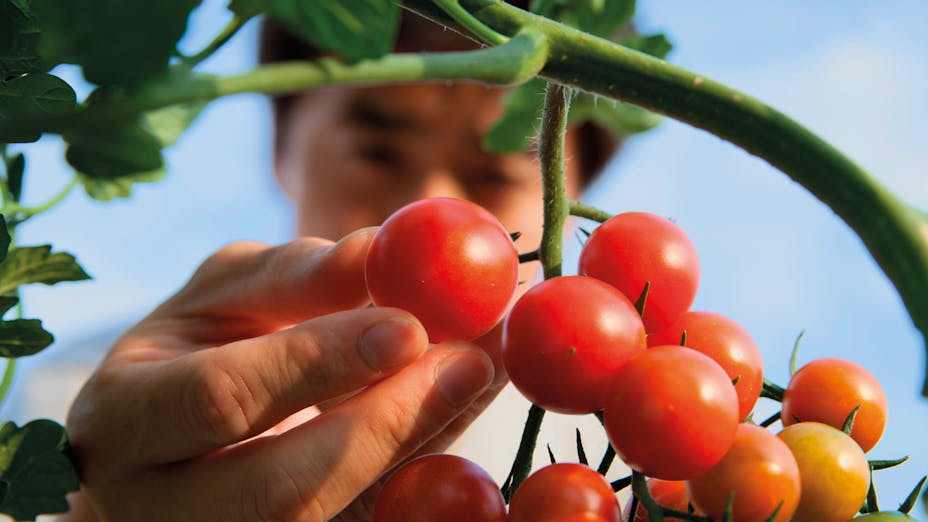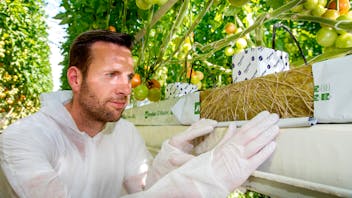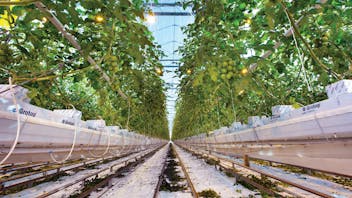Deep roots make for sustainable growing process
Less soil, less water, less fertiliser, lower CO2 emissions, but a significantly higher yield. That’s precision agriculture. Stone wool substrates play a key role in this. When plants have their roots deep in the stone wool you can regulate the growth process in the best possible way. This is one of the sustainability benefits of cultivating plants on stone wool. But there are others too!
Fifty years ago an employee of ROCKWOOL – the parent company of Grodan – discovered that plants thrived on an untreated piece of insulating material that he had left outside by chance. Since then stone wool has been an integral part of hi-tech horticulture. “You can grow 45 metres of tomato plants on a 120x15x10 cm piece of stone wool,” says Vincent Deenen from Grodan. “Clearly, that’s something quite exceptional!”
Sustainable production of stone wool
Stone wool is made from basalt. “We only extract basalt from areas that have little natural value, so the impact is minimal,” says Vincent. “Once we have extracted it, we restore the quarries in such a way that nature can thrive. We plant more trees, for example. In other words, we leave the area in a better condition than we found it. We have done this in three quarters of our old quarries in Germany.” The basalt is converted into stone wool in ROCKWOOL’s factory. “ROCKWOOL’s core business is insulation. Every year we produce the stone wool using less energy,” says Vincent. “We’re constantly improving our operations by producing more using less energy.”
Sustainable agriculture
Grodan has a number of stone wool products that enable precision farming. Vincent: “Our product is made for hi-tech greenhouses. Growing plants in stone wool requires less soil and less greenhouse space. Water can be recirculated, because the excess water doesn’t just seep into the soil, it’s collected in drainage channels. So you only need 4 litres of water for a kilo of tomatoes. Outdoors, it’s 60 litres. And fertilisers are recirculated too. Sensors allow growers to see exactly what a plant has or has not absorbed. So, growing plants in substrates requires 20-25% less fertiliser. Also, given the higher yield, CO2 emissions per kilo of tomatoes are about 10-15% lower.”








